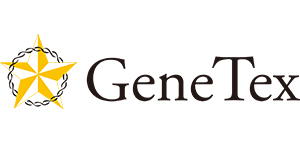Lipin 3 antibody, Internal
Lipin 3 antibody, Internal
Artikelnummer
GTX89240-100
Verpackungseinheit
100 μg
Hersteller
GeneTex
Verfügbarkeit:
wird geladen...
Preis wird geladen...
Application Note: IHC-P: 2-3μg/ml. *Optimal dilutions/concentrations should be determined by the researcher.Not tested in other applications.
Positive Control: The peptide used to generate this antibody is available for purchase (GTX89240-PEP).
Form: Liquid
Buffer (with preservative): TBS, 0.5% BSA, 0.02% Sodium azide.
Concentration: 0.50 mg/ml (Please refer to the vial label for the specific concentration.)
Background: The protein encoded by this gene is a member of the lipin family of proteins, and all family members share strong homology in their C-terminal region. This protein is thought to form hetero-oligomers with other lipin family members, while one family member, lipin 1, can also form homo-oligomers. This protein contains conserved motifs for phosphatidate phosphatase 1 (PAP1) activity as well as a domain that interacts with a transcriptional co-activator. Lipin complexes act in the cytoplasm to catalyze the dephosphorylation of phosphatidic acid to produce diacylglycerol, which is the precursor of both triglycerides and phospholipids. Lipin complexes are also thought to regulate gene expression as transcriptional co-activators in the nucleus. Alternative splicing results in multiple transcript variants. [provided by RefSeq, Sep 2014]
Uniprot ID: Q9BQK8
Antigen Species: Human
Immunogen: Peptide with sequence C-KPKQKEDAVATD, from the internal region of the protein sequence according to NP_075047.1.
Purification: Purified by ammonium sulphate precipitation followed by antigen affinity chromatography
Conjugation: Unconjugated
Full Name: lipin 3
Positive Control: The peptide used to generate this antibody is available for purchase (GTX89240-PEP).
Form: Liquid
Buffer (with preservative): TBS, 0.5% BSA, 0.02% Sodium azide.
Concentration: 0.50 mg/ml (Please refer to the vial label for the specific concentration.)
Background: The protein encoded by this gene is a member of the lipin family of proteins, and all family members share strong homology in their C-terminal region. This protein is thought to form hetero-oligomers with other lipin family members, while one family member, lipin 1, can also form homo-oligomers. This protein contains conserved motifs for phosphatidate phosphatase 1 (PAP1) activity as well as a domain that interacts with a transcriptional co-activator. Lipin complexes act in the cytoplasm to catalyze the dephosphorylation of phosphatidic acid to produce diacylglycerol, which is the precursor of both triglycerides and phospholipids. Lipin complexes are also thought to regulate gene expression as transcriptional co-activators in the nucleus. Alternative splicing results in multiple transcript variants. [provided by RefSeq, Sep 2014]
Uniprot ID: Q9BQK8
Antigen Species: Human
Immunogen: Peptide with sequence C-KPKQKEDAVATD, from the internal region of the protein sequence according to NP_075047.1.
Purification: Purified by ammonium sulphate precipitation followed by antigen affinity chromatography
Conjugation: Unconjugated
Full Name: lipin 3
| Artikelnummer | GTX89240-100 |
|---|---|
| Hersteller | GeneTex |
| Hersteller Artikelnummer | GTX89240-100 |
| Verpackungseinheit | 100 μg |
| Mengeneinheit | STK |
| Reaktivität | Human |
| Klonalität | Polyclonal |
| Methode | Immunohistochemistry (paraffin) |
| Isotyp | IgG |
| Human Gene ID | 64900 |
| Wirt | Goat |
| Konjugat | Unconjugated |
| Produktinformation (PDF) | Download |
| MSDS (PDF) | Download |

 English
English







